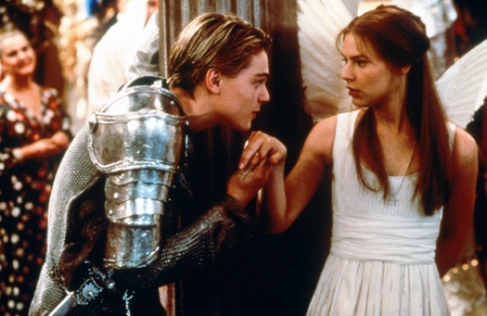
(Lord Peter)
I’ve decided to do a Marxist reading on a book from a series that I’ve been reading since mid-summer. Before I discuss the Marxist implications, I thought I’d do a bit of an overview of the series!
Dorothy Sayers wrote about 11 novels and multiple collections of short stories of mystery fiction featuring her detective, Lord Peter Wimsey. As he is the second son of a duke, Lord Peter is not, of course, a detective by trade, but he took up the hobby after coming home shell-shocked from WWI, as a way to keep active and to use his keen intellect (which he also had used in military intelligence). Peter is thoroughly likeable, but he often puts up a front as an empty-headed aristocrat, in order to wheedle information out of suspects. He is a book-collector and an Oxford man and frequently intersperses his conversations with quotes from classic literature. All in all, he is an extremely engaging character, as are the other mainstays of the Wimsey books, including Peter’s friend in Scotland Yard, Detective Parker, his manservant/valet, Bunter, his relatives and, of course, accused murderess/mystery writer/love interest, Harriet Vane.
The novel I want to discuss through a Marxist lens is the novel called Murder Must Advertise, in which Peter goes undercover as a copywriter at an ad agency where another copywriter has just died under suspicious circumstances. Here, for the first time, the reader sees Peter working for his wages. Unlike other detectives, he’s never paid for his detective work (he doesn’t need to be) and often is merely tagging along or helping his friends at the Yard. There is a tension throughout the series between how Peter wants detection to be and how it actually is. What he would like is for each case to present a nice intellectual challenge to untangle – which it often does. What he does not want is for there to be consequences to untangling said challenge, namely, the trial, conviction and (this being the 20’s/30’s) hanging of a criminal. When Peter makes an offhand remark about the “game” of detection in an early novel in the series, Parker (of more humble origins) quickly replies that it isn’t a game at all, it’s a job. In the first novel, after Peter has helped catch a particularly ruthless murderer, he descends into a sort of sickness that parallels his post-war state, when he felt residual guilt for ordering men to their deaths.
What does all this mean? My question is: British fiction often deals more directly with class than American fiction, which suggests that it may be easier to pick out class bias, since it’s more explicit. Is that the case for the Wimsey books, and, in particular, Murder Must Advertise? Are we predisposed to be biased against those from a lower class than Peter, since Peter is so sympathetic, or are we biased against Peter’s class (as they are not always portrayed in the best light) and thus we see Peter as an exception rather than the rule? Does Peter have some sort of “noblesse oblige” to contribute to society in the best way he can, since he isn’t doing much else by way of occupation? Do we, as readers, excuse him when he oversteps normal boundaries, in the same way that people in the books do, simply because of his title?
As I said above, an interesting factor in Murder Must Advertise is that Peter spends most of the book working as a copywriter. Because of his intelligence and wit, he is actually quite skilled at it, but has no intentions of continuing once the murder is solved. The whole novel (Sayers had worked in advertising) also is quite cynical about the whole capitalist cycle in which advertisers essentially convince consumers that they need something, provide them that product (say, butter), and then turn around and provide them with another product (say, weight loss pill) that addresses a problem caused by the first product. Sayers, through Peter, makes an interesting comment that it isn’t enormously rich people who drive this consumer cycle, but rather your average working person, who needs to buy certain luxury items to escape the monotonous routines of their daily lives.
Also notable is the relationship between Parker (now Chief Inspector) and Peter’s sister, Mary. The two get engaged at the end of a previous novel and are now married with two young children. (It is implied in Strong Poison, when the two get engaged, that Peter especially wants the two to marry so as to “pave the way” for his own courtship of Harriet (who had been accused of murder and was certainly not an aristocrat either), in the eyes of his family.) Parker had long had an inferiority complex regarding Mary, but Sayers addresses this problem in a very “American” way – that is, Mary essentially has her money put aside so that she receives each month the exact equivalent of Parker’s salary, so that they are equal on that footing.
It is revealed by the end of the novel that the murderer did what he did out of financial hardship. Essentially, he didn’t have enough money to provide for his wife, who was pregnant, and he couldn’t leave his job at the advertising agency (where he wasn’t paid very much) because he couldn’t risk being unemployed for any period of time. As a result, he agreed to a rather shady side venture that ended up putting him at risk of blackmail – at which point he opts for murder instead. As is often the case, Peter has genuine sympathy for his plight, especially the man’s fear that his family will be implicated the rest of their lives if he is convicted of murder. Peter, although unable to save the man, ultimately allows him to find a path that will protect his family from stigma.
So many of these mysteries (as with real life) revolve around money: Who inherits? Is there a will? Who’s next of kin? Etc. etc. Peter, who is, as I said, often sympathetic (even to a fault) with the criminals, will never find himself in quite so desperate a position. With this in mind, I examine my own life to see where I need to use my imagination and empathy to relate to people who are struggling with things I am not currently (or may not ever) encounter. I think that is a useful and rich exercise for anyone, including my students.

